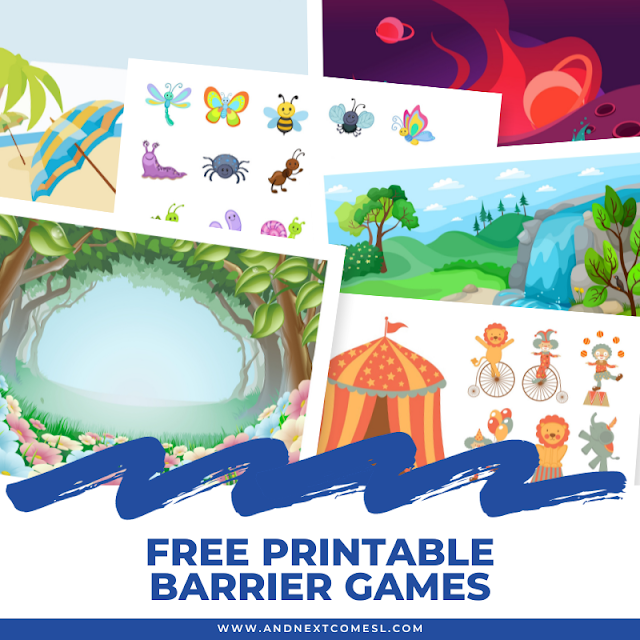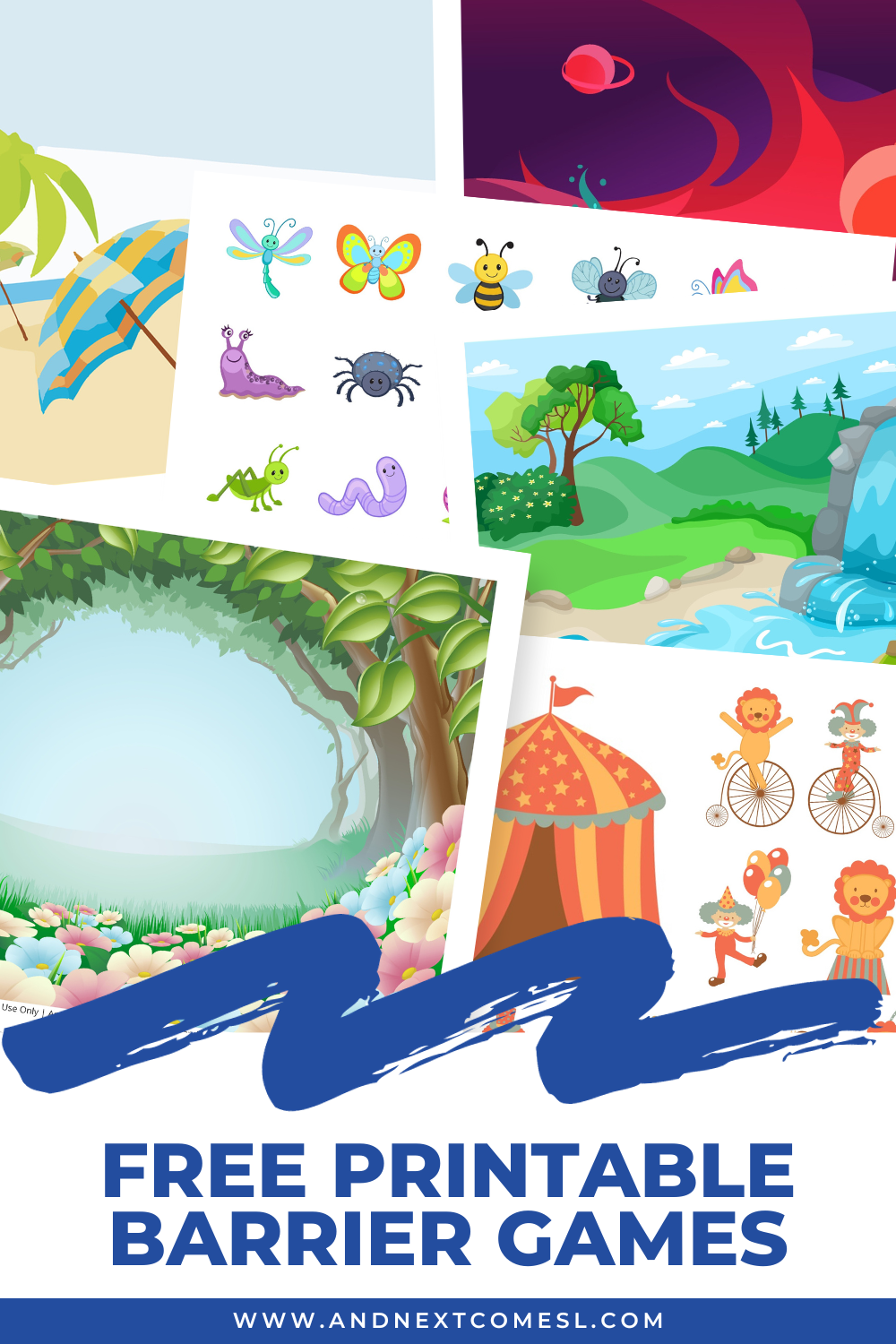When a speech therapist first introduced barrier games to us many years ago, it was eye-opening. It was such a powerful tool that I didn't know we needed. But after just a few game plays, I realized how effective and helpful it was for my son.
Then I went crazy and made a whole bunch of printable barrier games to use at home (and subsequently, offer here) to work on some specific speech and language goals.
What are Barrier Games?
Have you ever played the game Battleship?
It's easily the most popular and well-known barrier style game.
Basically, it's a game that involves putting some kind of physical barrier between you and another player (you can see where it gets it name from now, right?), while you try to duplicate the other player's scene using verbal instructions.
It's a game that involves listening carefully and following directions. And the objective of the game is to have identical pictures at the end. That is, all objects should be placed in the same spots on both player's scenes.
So, for instance, in Battleship, you are trying to figure out where the other player's ships are, mark them on your side of the barrier, and sink them all. You guess coordinates verbally and the other player confirms whether it is a hit or a miss and then you mark it on your board.
In short, barrier games are a speech and language game.
How to Play Barrier Games
Now that you know what barrier games are, let's take a closer look at how to play them. Here's how barrier games work:
- A barrier is put between the two players so that neither player can see the other player's scene (you can use a file folder, a box, an easel, or similar for the barrier)
- Each player has an identical set of materials and background scenes
- One player places an item or object onto their scene, giving specific and detailed verbal instructions to the other player about what object they are placing, where they are placing it, and how they are placing it
- The opposite player listens carefully and attempts to place the same object in the exact same place on their landscape or scene using only the verbal instructions that they were given (they are also allowed to ask questions for clarification)
- Repeat the two above steps until all items are placed
- Remove the barrier and compare the scenes of the two players, checking to see how similar they look (the goal is to have them be as similar as possible)
Alternatively, you can have each player take turns placing objects and describing the scene instead of one person always giving instructions.
What are Barrier Games Used For?
Barrier games are extremely versatile. They can be used to target a variety of speech, language, and social skills goals, including:
- Following directions (simple, multi-step, and sequential)
- Listening carefully
- Giving clear specific directions
- Turn taking
- Vocabulary
- Prepositions (on, under, above, beside, next to, etc.)
- Expressive speech
- Receptive language
- Comprehension
- Adjectives
- Asking questions
- Speaking in sentences
- Articulation
Free Printable Barrier Games
From aliens to fairies and everything in between, you're sure to find a fun themed barrier game PDF below that will appeal to your kids. Each game comes with a brightly colored landscape or scene and cute characters or items to place on the scene.
-

ALIENS BARRIER GAME
-

BALLET BARRIER GAME
-

BEACH BARRIER GAME
-

BUG BARRIER GAME
-

CIRCUS BARRIER GAME
-

DRAGONS BARRIER GAME
-

FAIRIES BARRIER GAME
-

FAIRY TALE BARRIER GAME
-

FARM BARRIER GAME
-

MEDIEVAL BARRIER GAME
-

MERMAIDS BARRIER GAME
-

MOONWALK BARRIER GAME
-

OCEAN BARRIER GAME
-

PIRATES BARRIER GAME
-

POND BARRIER GAME
-

SPACE BARRIER GAME
Seasonal Free Printable Barrier Games
These printable barrier games have a seasonal twist. So if you need Halloween, winter, or Christmas themed speech therapy activities to try, then hopefully you'll enjoy these!
Want More Barrier Games?
Didn't see a theme above that would appeal to your kids (or clients)? Then you might want to check out these printable barrier games bundle packs.
















